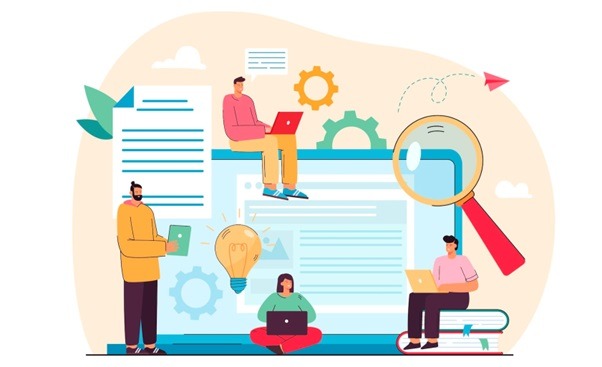The medtech industry is known for its innovation. This has become seen with the convergence of the Internet of Things (IoT) with healthcare. As connected technology becomes increasingly integrated into our everyday lives, it is only natural to see an increase in health-linked devices and the expansion of the connected medical device industry. The number of linked medical devices on the market is predicted to grow rapidly over the next decade as more providers turn to connected health solutions to improve patient care. (See more in hattrick-it)
What Are Medical Devices That Are Connected?
Medical equipment that can connect to the internet through WiFi, Bluetooth, or radio transmission are considered connected. Beyond the fundamental purpose of detecting, treating, curing, or preventing disease, many medical devices include digital capabilities that allow them to interface with and connect to other networks and systems. Connected medical devices include electromechanical medical devices such as imaging machines, clinician-monitored wearable fitness trackers, and automated medication administration devices.
The Medical Internet of Things (IoMT)
To comprehend linked medical devices, one must first comprehend the Internet of Medical Things. The Internet of Medical Things, often known as IoMT, is a networked infrastructure of medical equipment, software applications, and healthcare information technology systems and services. With the use of linked medical devices and medical mobile applications, the IoMT integrates data (patient information or performance data), people (patients, doctors, and caregivers), and processes (healthcare delivery and patient support).
Connectivity of Wireless Medical Devices
Wireless device-to-device and device-to-internet connections can be created in three ways.
- WiFi: WiFi connects devices to the Internet and to one another using a radio frequency transmission. When inside the WiFi signal range, wireless-capable devices can pick up on this signal. WiFi connectivity offers a number of advantages in the case of linked medical devices: automated device updates may be made remotely, data can be sent to, retrieved from, and stored in the cloud, and so on.
- Bluetooth: Bluetooth technology allows devices to communicate across short distances. Bluetooth medical devices are utilised in healthcare to allow patients to wirelessly connect their medical gadgets. A wearable gadget that measures heart rate and pulse oximetry and then presents that data in an app on the patient’s smartphone is an example of this.
- Radio Transmission: The earliest of these three technologies is data transmission through radio frequency. For many years, radio frequency has been used to connect short-range medical equipment. The world’s first totally wireless pacemaker, in fact, had a low-power radio transmitter that autonomously sent data from the device to a home transmitter, where it could subsequently be accessed by the physician through an Internet link.
Advantages of Connected Medical Devices
Connected devices and the IoMT give a variety of immediate benefits to patients and healthcare practitioners.
- Real-Time Patient Monitoring: Connected medical devices may monitor patient behaviour in real time and provide that information straight to caregivers. This data collection might take place in the hospital or at home. Because of the enormous number of patients in hospitals, continual monitoring of critical information such as vital sign data is not always possible. Smart patient monitoring systems send nurses and doctors updates and alerts on crucial patient information like heart rate and oxygen saturation without needing them to visit a patient’s room on a regular basis. Take-home versions of health-connected devices can monitor patient symptoms and diagnoses while sharing that information with care professionals, enabling greater home monitoring and perhaps decreasing the need for follow-up visits.
- More Personalized Care: Physicians can make better, more individualised judgments regarding patient treatment if they have consistent and reliable patient data. Physicians can track the success of certain therapy and make modifications as they acquire insight into patient behaviour. A doctor, for example, may prescribe a prescription that arrives in a container with an integrated sensor that records how frequently and at what time the bottle is opened. This informs the clinician on how frequently medicine is accessed and can lead to improved medication adherence.
- Increased Safety: Connected devices as well as the IoMT may enable the prediction of device faults before they occur or cause major adverse effects. These gadgets can be more efficiently monitored by manufacturers and technical teams thanks to cloud connectivity. If something goes wrong, early warning alerts can be provided, allowing the potential problem to be rectified before it becomes a large-scale outage or pulls important systems offline.
The Future of Connected Devices in Medical Technology
The worldwide IoT in healthcare market is predicted to expand 21% between 2020 and 2025, with the medical device category accounting for the majority of this growth. Connected medical device penetration in a variety of sectors within the healthcare industry, a growing preference between clinicians for real-time data monitoring, and a need for digital healthcare solutions in the aftermath of the COVID-19 pandemic are all factors contributing to the rise in connected medtech and IoMT. Technological improvements will drive the creation of more connected medical devices capable of generating, collecting, analysing, sharing, and storing vital health data.
Hattrick aid in the design & development or contract manufacturing of connected medical devices. (See more in hattrick-it) to learn more about our capabilities.

